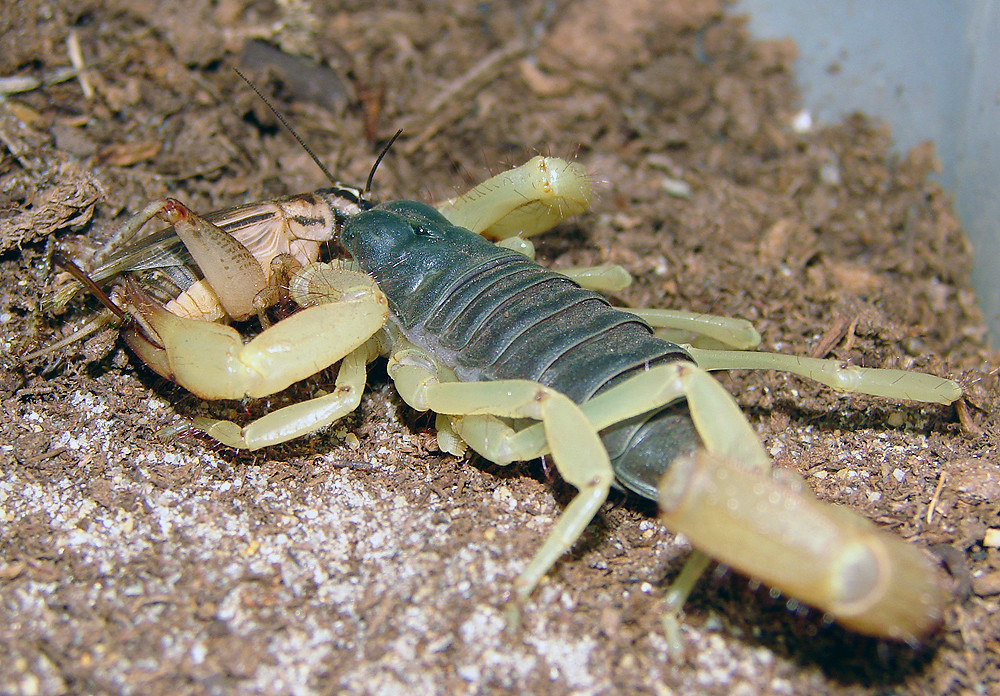Picture this: you’re walking through the Arizona desert at dusk when suddenly you feel a sharp pain in your ankle. A scorpion has just delivered its venomous payload into your bloodstream. While most people would panic, scientists are now asking a fascinating question – could that same venom actually help save millions of diabetic lives? The answer might surprise you, and it’s reshaping how we think about nature’s most feared creatures.
The Ancient Pharmacy Hidden in Nature’s Arsenal

For centuries, humans have feared scorpions and their potentially lethal stings. Yet these arachnids have been crawling across our planet for over 400 million years, perfecting their biochemical weapons with evolutionary precision. What we’re discovering now is that their venom isn’t just a tool for hunting and defense – it’s a sophisticated cocktail of bioactive compounds that could revolutionize modern medicine.
Scientists have identified over 100,000 different peptides in scorpion venoms worldwide. Each species has developed unique molecular signatures, creating what researchers call “nature’s pharmacy.” The Brazilian yellow scorpion alone produces venom containing more than 200 distinct compounds, many of which remain completely unstudied.
When Venom Meets Blood Sugar: The Diabetes Connection

Type 2 diabetes affects over 422 million people globally, and the numbers keep climbing. Traditional treatments often fall short, leaving patients struggling with blood sugar spikes and crashes that can damage organs over time. But researchers at the University of São Paulo made a startling discovery when studying scorpion venom – certain peptides seemed to regulate glucose metabolism in ways that conventional drugs couldn’t match.
The breakthrough came when scientists noticed that scorpion venom contains peptides similar to incretin hormones. These natural compounds help the pancreas release insulin at just the right moments. Unlike synthetic medications that work around the clock, these venom-derived peptides appear to activate only when blood sugar levels rise, mimicking the body’s natural response.
The Scorpion Species Leading the Medical Revolution

Not all scorpions are created equal when it comes to diabetes research. The Brazilian yellow scorpion (Tityus serrulatus) has emerged as the star performer, producing venom peptides that show remarkable promise in laboratory studies. This species, ironically one of the most dangerous to humans, may hold the key to treating a disease that kills more people annually than scorpion stings ever could.
Researchers are also investigating the giant forest scorpion (Heterometrus spinifer) and the Arizona bark scorpion (Centruroides sculpturatus). Each species offers unique peptide profiles that could target different aspects of diabetes management. The diversity is staggering – it’s like having thousands of potential medicines crawling around in nature’s laboratory.
From Deadly Sting to Life-Saving Drug: The Science Behind the Magic

The process of transforming scorpion venom into diabetes medication isn’t as simple as milking a scorpion and injecting patients. Scientists must first identify the specific peptides responsible for glucose regulation, then isolate and purify them from the complex venom mixture. This requires sophisticated techniques including mass spectrometry and protein sequencing.
Once isolated, these peptides undergo extensive modification to enhance their effectiveness and reduce toxicity. Researchers use a process called “directed evolution” to create safer, more potent versions of the original compounds. The goal is to keep the beneficial glucose-regulating properties while eliminating the dangerous side effects that make scorpion stings potentially fatal.
Clinical Trials: Hope Meets Reality

Early clinical trials have shown promising results that have researchers cautiously optimistic. In preliminary studies, patients treated with modified scorpion venom peptides experienced more stable blood sugar levels compared to those on traditional medications. The peptides seemed to work like a biological thermostat, activating only when needed and then switching off.
However, the journey from laboratory success to pharmacy shelf is long and challenging. Phase I trials focus on safety, ensuring the modified venom doesn’t cause harmful side effects. Phase II trials test effectiveness, while Phase III trials compare the new treatment to existing medications. Each phase can take years, and many promising treatments fail along the way.
The Unexpected Heroes: Other Venomous Creatures in Diabetes Research

Uploaded by berichard, CC BY-SA 2.0, https://commons.wikimedia.org/w/index.php?curid=16081947)
Scorpions aren’t the only venomous creatures contributing to diabetes research. The Gila monster lizard’s venom led to the development of exenatide, a successful diabetes medication already on the market. Cone snail venom contains peptides that could revolutionize pain management for diabetic neuropathy patients.
Even spider venom is being investigated for its potential to protect insulin-producing cells from damage. The diversity of venomous creatures means we’re only scratching the surface of what nature might offer. Each species represents millions of years of evolutionary fine-tuning, creating molecular tools that could address different aspects of diabetes management.
The Molecular Mechanics: How Venom Peptides Actually Work

Understanding how scorpion venom peptides regulate blood sugar requires diving into cellular biology. These peptides work by binding to specific receptors on pancreatic beta cells, the same cells responsible for producing insulin. When blood glucose levels rise, the peptides act like molecular keys, unlocking the cells’ ability to release exactly the right amount of insulin.
What makes these peptides special is their selectivity and timing. Unlike some diabetes medications that can cause dangerous drops in blood sugar, venom-derived peptides seem to have built-in safety mechanisms. They’re designed by evolution to be precise, because a scorpion’s survival depends on delivering just the right dose of bioactive compounds to subdue prey without wasting precious venom.
Manufacturing Challenges: From Desert to Pharmacy

One of the biggest hurdles in developing scorpion venom-based diabetes treatments is production. You can’t exactly set up scorpion farms and expect to harvest enough venom for millions of patients. Instead, scientists use genetic engineering to produce the beneficial peptides in laboratory settings. Bacteria, yeast, or even insect cells are modified to produce the desired compounds.
This biotechnology approach allows for large-scale production while maintaining consistency and purity. However, it also adds complexity and cost to the development process. Each batch must be carefully tested to ensure it contains the right concentration of active peptides and no harmful contaminants.
Safety Concerns: Balancing Benefit and Risk

Working with compounds derived from deadly venom naturally raises safety concerns. Researchers must carefully balance the therapeutic benefits against potential risks, especially since these peptides are designed by nature to be biologically active. Even modified versions could potentially cause unexpected side effects.
The good news is that the peptides being developed are significantly different from the original venom compounds. Through careful molecular engineering, scientists can enhance the beneficial properties while reducing toxicity. It’s similar to how morphine, derived from the opium poppy, can be both a life-saving pain medication and a dangerous drug depending on how it’s used.
Global Impact: What This Could Mean for Diabetes Treatment
If successful, scorpion venom-based diabetes treatments could transform healthcare in developing countries where diabetes rates are skyrocketing. Traditional insulin requires refrigeration and careful handling, making it challenging to distribute in remote areas. Venom-derived peptides might be more stable and easier to transport, potentially reaching patients who currently lack access to effective treatment.
The economic implications are equally significant. Diabetes costs the global economy over $760 billion annually in healthcare expenses and lost productivity. More effective treatments could reduce complications like kidney disease, blindness, and amputations that drive much of this cost. Even a modest improvement in diabetes management could save millions of lives and billions of dollars.
The Future of Venom-Based Medicine

Scorpion venom research represents just the beginning of what scientists call “venomics” – the systematic study of venoms for medical applications. As DNA sequencing becomes cheaper and faster, researchers can analyze venom from thousands of species, potentially discovering treatments for cancer, neurological disorders, and infectious diseases.
Artificial intelligence is accelerating this process by predicting which venom peptides might be most promising for specific medical conditions. Machine learning algorithms can analyze molecular structures and predict biological activity, helping researchers focus their efforts on the most likely candidates for drug development.
Environmental Implications: Protecting Our Venomous Healers
The potential medical value of scorpion venom adds a new dimension to conservation efforts. Many scorpion species face habitat loss and climate change, potentially eliminating sources of future medical breakthroughs before we even discover them. Protecting biodiversity isn’t just about preserving ecosystems – it’s about safeguarding nature’s pharmacy for future generations.
This creates an interesting paradox: the creatures we fear most might be the ones we need to protect most carefully. Every extinct species represents lost opportunities for medical advancement. The scorpion species that could cure diabetes might be living in a desert that’s scheduled for development, or facing extinction due to climate change.
Patient Perspectives: Hope and Skepticism

For the millions of people living with diabetes, the prospect of venom-based treatments brings both hope and understandable skepticism. Many patients have tried numerous medications with limited success, experiencing side effects that sometimes seem worse than the disease itself. The idea that a scorpion’s sting could provide relief seems almost too good to be true.
Patient advocacy groups are cautiously optimistic but emphasize the importance of rigorous testing and transparent communication about risks and benefits. They’ve seen promising treatments fail in late-stage trials before, and they understand that medical breakthroughs often take decades to reach patients. Still, the unique mechanism of action offered by venom peptides provides hope for people who haven’t responded well to existing treatments.
The Road Ahead: Challenges and Opportunities

Despite the promising research, significant challenges remain before scorpion venom-based diabetes treatments become reality. Regulatory approval processes are lengthy and expensive, requiring extensive safety and efficacy data. Manufacturing scalability remains a concern, as does the need for long-term studies to understand potential side effects.
However, the opportunities are equally compelling. Success with scorpion venom could open doors to treatments for other conditions, from chronic pain to autoimmune diseases. The technology and knowledge gained from this research could accelerate the development of other venom-based therapies, creating a new class of precision medicines tailored to individual patient needs.
The intersection of ancient evolution and modern medicine continues to surprise us. Who would have thought that the same creatures that terrorize campers and hikers could hold the key to treating one of humanity’s most pressing health challenges? As research progresses, we’re learning that nature’s most feared predators might actually be our most valuable allies in the fight against disease. The next time you encounter a scorpion, remember – you might be looking at a future lifesaver in disguise.

